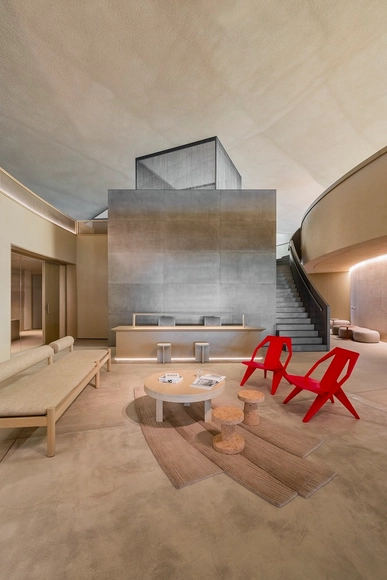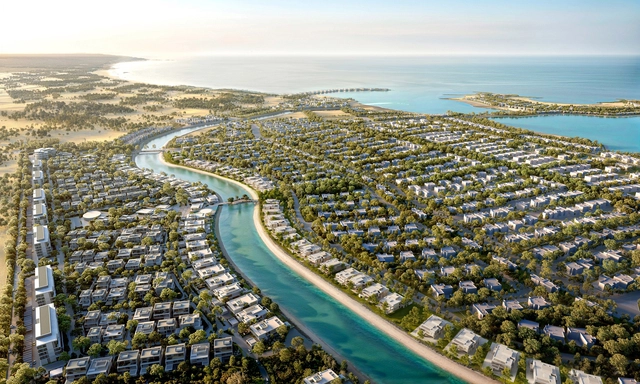
-
Architects: Foster + Partners
- Area: 88870 m²
- Year: 2025
-
Manufacturers: Goppion
-
Professionals: AKT II, WSP Norge, Arabtec, Six Construct-Trojan JV, Swissboring, +7



As cultural institutions advanced major preservation projects and new demographic data reframed understandings of urban growth, this week's architectural discussions centred on how cities and museums adapt to evolving social, environmental, and infrastructural conditions. Efforts to safeguard modern heritage, developments in long-term urban planning, and reflections on architectural legacy intersect with global observances such as the International Day of Persons with Disabilities, highlighting the ongoing need for more inclusive and accessible environments within the built landscape.

Zayed National Museum, the national museum of the United Arab Emirates and a major anchor of Abu Dhabi's Saadiyat Cultural District, has opened to the public. The project was awarded to Foster + Partners following a 2007 design competition, with construction commencing the following year. Its inauguration marks a significant moment in the UAE's cultural development, coinciding with a year that saw the opening of teamLab Phenomena Abu Dhabi and the Natural History Museum Abu Dhabi, as well as the reopening of Al Ain Museum, broadening the region's institutional landscape.

Back in April 2022, Abu Dhabi unveiled the first images of a new Natural History Museum designed by the Dutch practice Mecanoo. Three years later, on November 22, 2025, the museum opened its doors to the public, presenting 13.8 billion years of science and discovery with a special focus on the Arabian region. Covering more than 35,000 sqm, the design is intended to resonate with natural rock formations. Geometry acts as the unifying theme, with pentagonal shapes referencing cellular structures. Water and vegetation, symbols of life in the desert, also play an important role in the design. Located in Abu Dhabi's Saadiyat Cultural District, the building houses rare meteorites, dinosaur fossils, and reconstructions of the region's prehistoric landscapes, combining natural history, storytelling, and immersive environments. Through interactive exhibitions, special events, and community-science programmes, the museum seeks to encourage audiences of all ages to engage with the natural world.

The Pritzker Architecture Prize has released a special video honoring Liu Jiakun, the 54th Laureate of the award. Filmed at the Louvre Abu Dhabi, the ceremony celebrates Liu's architectural vision, characterized by a deep engagement with civic life, cultural continuity, and the human condition. The film captures moments from the event and offers insight into Liu's broader practice, emphasizing architecture's capacity to reconcile tradition and modernity while addressing social and environmental challenges. The release of the ceremony video marks the culmination of the 47th edition of the Pritzker Architecture Prize. The 2026 Laureate will be announced in March, continuing the award's legacy of recognizing architects whose work advances the discipline and its role in shaping human experience.

This week's architectural highlights traced the intersections between heritage, climate awareness, and contemporary design practice. As the 19th Venice Architecture Biennale approaches its closing, projects exploring collective intelligence and material experimentation offer reflections on small-scale responses to global challenges. In Egypt, the completion of the Grand Egyptian Museum marks a long-anticipated moment in cultural preservation, while new competition initiatives in Jordan extend this dialogue toward sacred and archaeological contexts. Complementing these developments, the recognition of Abdelwahed El-Wakil with the Tamayouz Lifetime Achievement Award highlights the continued influence of tradition-informed design across contemporary practice.


A series of recently announced projects across Europe, Asia, the Middle East, and North America reflects an ongoing shift in architectural thinking toward approaches that integrate buildings with their landscapes, programs with public life, and design with long-term environmental goals. In Nantes, France, a healthcare campus redefines medical education through climate-conscious planning, while in San Antonio, Texas, a new arboretum transforms a former golf course into a research-driven public landscape. Residential towers are rising beside Bangkok's Lumphini Park, a new coastal community is underway in the UAE, and an expansion to the Nelson-Atkins Museum in Kansas City reconsiders how cultural institutions connect with their surroundings. Together, these announcements point to a growing interest in projects that embed architecture within broader ecological and civic systems, proposing new models of spatial integration, accessibility, and resilience.
The Pritzker Architecture Prize, in collaboration with the Department of Culture and Tourism – Abu Dhabi, hosted On Land: A Model for Community, the 2025 Pritzker Architecture Prize Laureate Lecture and Panel Discussion. The event took place at the Cultural Foundation in Abu Dhabi on Saturday, May 3rd.

In recent years, the Gulf region has emerged as a global center for cultural and architectural development, commissioning internationally acclaimed architects to design its most high-profile museums and institutions. These projects, ranging from Louvre Abu Dhabi by Jean Nouvel to Museum of Islamic Art in Doha by I. M. Pei, are often designed by foreign architects, yet they aim to embed themselves within their context through strategies that reference the region's landscape, climate, and architectural traditions. This raises a fundamental question: What defines local architecture in the 21st century?

The Saadiyat Cultural District in Abu Dhabi is a site of several cultural and architectural developments designed by prominent architects. Notable projects include the Louvre Abu Dhabi by Jean Nouvel, the Guggenheim Abu Dhabi by Frank Gehry, the Zayed National Museum by Foster + Partners, the Natural History Museum Abu Dhabi by Mecanoo, and the Abrahamic Family House by Adjaye Associates. Striving to establish itself as a global hub for cultural dialogue, creativity, and knowledge exchange, the master plan prioritizes forming connections between local heritage and global perspectives.
